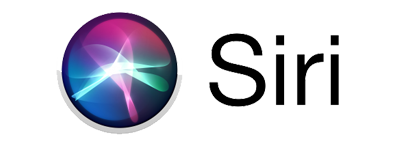Introduction
We’ve all heard the buzz about artificial intelligence (AI), but how do you actually use it? More importantly, how can it make your life easier? AI isn’t just for tech geeks anymore—it’s for everyone. From managing your calendar to writing emails, AI can handle the small, repetitive tasks that clutter your day. This blog will show you how to use AI effectively in your daily routines, so you can focus on the things that matter.
Let’s dive in and explore how AI can change your everyday life for the better.
Understanding the Power of AI in Daily Life

AI is like having a personal assistant working quietly in the background—taking care of little things while you focus on the bigger picture. But what makes AI so special? Well, it can learn from patterns, predict your needs, and offer solutions before you even realize you need them!
Types of AI You Can Use Today
- Virtual Assistants (Siri, Alexa, Google Assistant): These AI helpers are perfect for setting reminders, checking the weather, or controlling your smart home devices.
- AI-Powered Productivity Tools (ChatGPT, Grammarly, Jasper AI): Need to draft an email or write a report? These tools help you write better and faster.
- Automation Tools (Zapier, IFTTT): Automate workflows like sending emails or posting updates without lifting a finger.
How AI Can Help You Stay Organized
Do you ever feel overwhelmed trying to keep everything in order? AI can help!
AI-Driven Calendars and Scheduling
Apps like Google Calendar use AI to suggest meeting times based on your availability, making scheduling a breeze.
Automating Email Responses
Gmail’s Smart Reply feature can suggest responses based on the content of your emails—saving you time and energy.
Managing Tasks and Reminders with AI
Tools like Microsoft To-Do and Todoist use AI to remind you about important deadlines and help you prioritize tasks.
Using AI for Personal Growth and Learning

Want to level up your skills or learn a new language? AI’s got you covered.
Personalized Learning with AI Tutors and Apps
AI-powered platforms like Khan Academy adapt lessons based on your progress, offering a personalized learning path.
Language Learning Through AI-powered Platforms
Apps like Duolingo and Babbel use AI to adjust lessons to your learning pace, making language acquisition smoother.
Enhancing Creative Skills with AI Tools
AI tools like DALL-E and Adobe Firefly help artists and creators generate unique visuals with ease.
AI in Professional Workflows
Streamlining Work Through AI Project Management Tools
AI-based tools like Monday.com can forecast project timelines and help teams stay on track.
Improving Writing and Communication
Grammarly’s AI checks your tone and grammar, ensuring your emails and reports are polished and professional.
AI for Data Analysis and Reports
Google Analytics and Power BI use AI to generate insights from raw data, helping businesses make better decisions.
Using AI to Stay Healthy and Fit

Fitness Apps with AI Coaches
AI-powered fitness apps like Freeletics create personalized workout plans based on your fitness level and goals.
Sleep Tracking and Meditation Apps Powered by AI
Apps like Calm and Headspace offer guided meditations, while AI sleep trackers analyze your sleep patterns to improve rest.
Nutrition Planning with AI Suggestions
AI-driven apps like MyFitnessPal recommend meals and track calories to keep your diet in check.
Security and Privacy: How AI Helps Keep You Safe
AI isn’t just about convenience; it’s also about security.
AI in Cybersecurity Tools
AI-driven cybersecurity tools monitor systems in real-time, spotting threats before they cause damage.
Facial Recognition for Device Security
Unlocking your phone with your face? That’s AI at work! Facial recognition ensures only you can access your devices.
AI-Driven Fraud Detection Systems
Banks use AI to detect unusual activity and prevent fraud before it happens.
Tips for Using AI Effectively
- Balance AI Automation with Human Judgment: AI is powerful, but human oversight is still essential.
- Customize AI Settings to Fit Your Needs: Tweak the settings to make AI tools work better for you.
- Stay Updated with the Latest AI Features and Trends: AI evolves fast—keep learning to stay ahead.
Potential Pitfalls to Avoid When Using AI
Over-Reliance on AI and Its Risks
Relying too much on AI can make you forget how to handle things manually.
Privacy Concerns: What You Should Know
Always read the privacy policies of the AI tools you use.
Ethical Use of AI Tools
Use AI responsibly, ensuring it aligns with your values and ethics.
Conclusion
AI is a game-changer when used effectively. It can handle routine tasks, help you stay organized, and even improve your personal and professional life. The key is to strike a balance—let AI do the heavy lifting, but don’t forget to stay involved.
FAQs
1. Can AI replace human tasks entirely?
Not entirely. AI can assist with repetitive tasks, but human intuition and creativity remain unmatched.
2. How do I start using AI if I’m new to it?
Start small! Use virtual assistants or AI-powered calendars to ease into it.
3. What are the safest AI tools for personal use?
Tools like Google Assistant, Grammarly, and Duolingo are beginner-friendly and secure.
4. Can AI invade my privacy?
Some AI tools collect data, so it’s important to use trusted services and review privacy policies.
5. How do I know which AI tool is right for me?
Choose tools that align with your needs and daily routines—experiment and adjust as needed.





